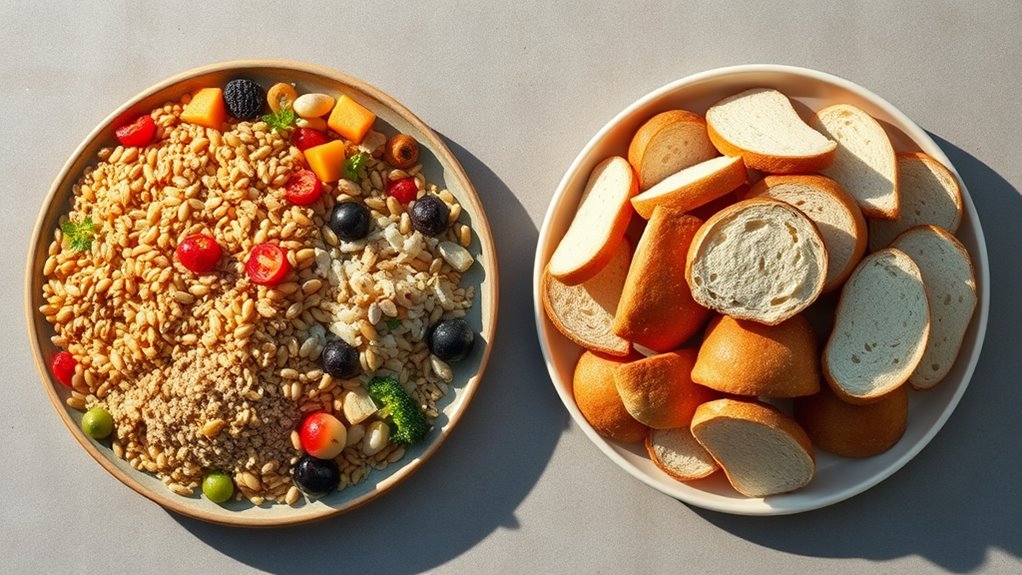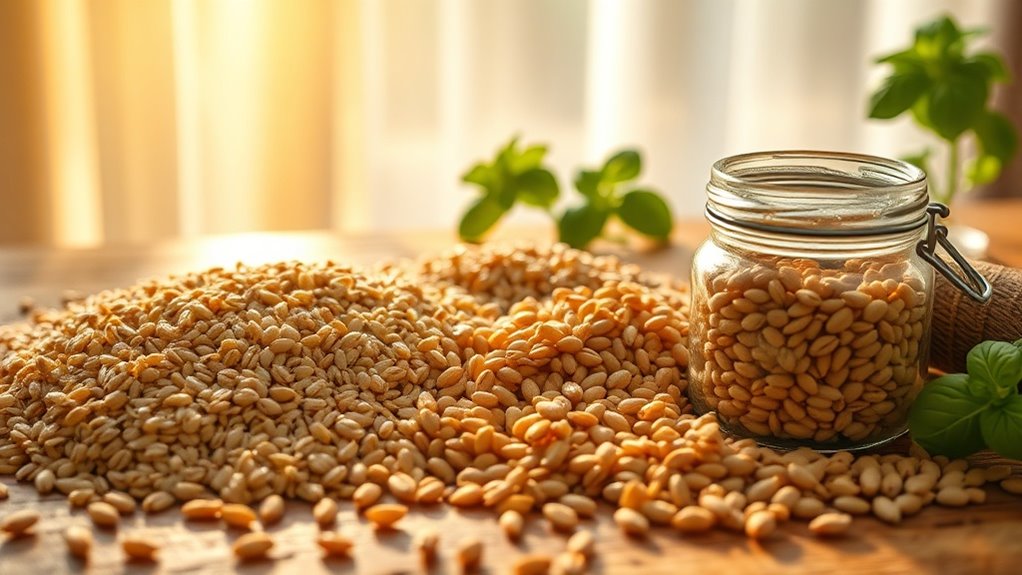The Truth About Carbs – Good vs. Bad Explained
When it comes to carbohydrates, not all are created equal. Some can fuel your body and support your health, while others might undermine your dietary goals and well-being. You might think all carbs are bad, but understanding the difference between good and bad carbs is essential for making informed choices. Let’s explore how these carbs impact your body and what you can do to choose wisely for a healthier lifestyle.
Understanding Carbohydrates: The Basics
When you think about carbohydrates, it’s essential to recognize that not all carbs are created equal.
Carbohydrate facts reveal there’s a difference between simple and complex carbs. Simple carbs are quickly digested, leading to spikes in blood sugar, while complex carbs provide longer-lasting energy.
Understanding these distinctions helps you make informed choices about your food, promoting better health and sustained energy levels.
The Benefits of Good Carbs
While many people might fear carbs due to misconceptions, embracing good carbohydrates can actually enhance your overall well-being.
These carbs, found in whole grains, fruits, and vegetables, provide essential nutrients and fiber. They help regulate blood sugar levels, improve digestion, and promote satiety, keeping you energized throughout the day. Additionally, incorporating acclaimed superfoods into your diet can further boost your health benefits.
Incorporating good carbs into your diet supports a healthy lifestyle and overall health.
The Dangers of Bad Carbs
Although many people often overlook the risks, bad carbs can considerably impact your health and well-being.
Consuming excessive refined sugars and processed grains contributes to weight gain, increased blood sugar levels, and a higher risk of chronic diseases like diabetes and heart problems.
These carbs offer little nutritional value and can lead to unhealthy cravings, making it essential to limit their intake for ideal health. Moreover, reducing sugar intake can lead to notable improvements in mood transformation, as the body’s physiological and psychological state adjusts to a lower sugar environment.
How to Identify Good vs. Bad Carbs
How can you tell the difference between good and bad carbs? Focus on fiber content and ingredient lists. Good carbs typically come from whole foods, while bad carbs usually contain added sugars and refined grains. Additionally, it’s essential to evaluate nutrient quality to make informed choices about the carbohydrates you consume.
| Good Carbs | Bad Carbs |
|---|---|
| Whole fruits | Sugary snacks |
| Vegetables | White bread |
| Whole grains | Pastries |
| Legumes | Sugary beverages |
Incorporating Carbs Into a Balanced Diet
Understanding the difference between good and bad carbs can help you make informed choices when incorporating them into your balanced diet. Focus on whole grains, fruits, and vegetables, which provide essential nutrients and fiber. Limit refined sugars and processed options. Additionally, adopting clean eating principles can further enhance your health by prioritizing nutrient-dense foods and minimizing additives.



